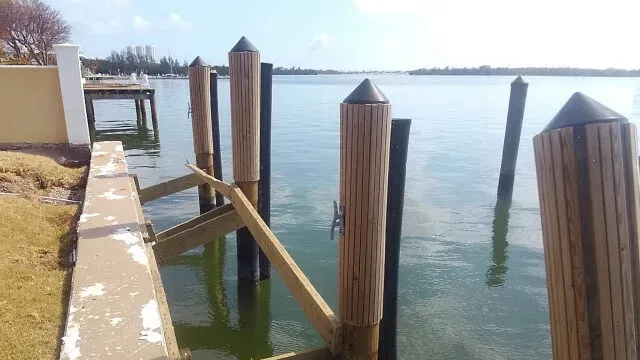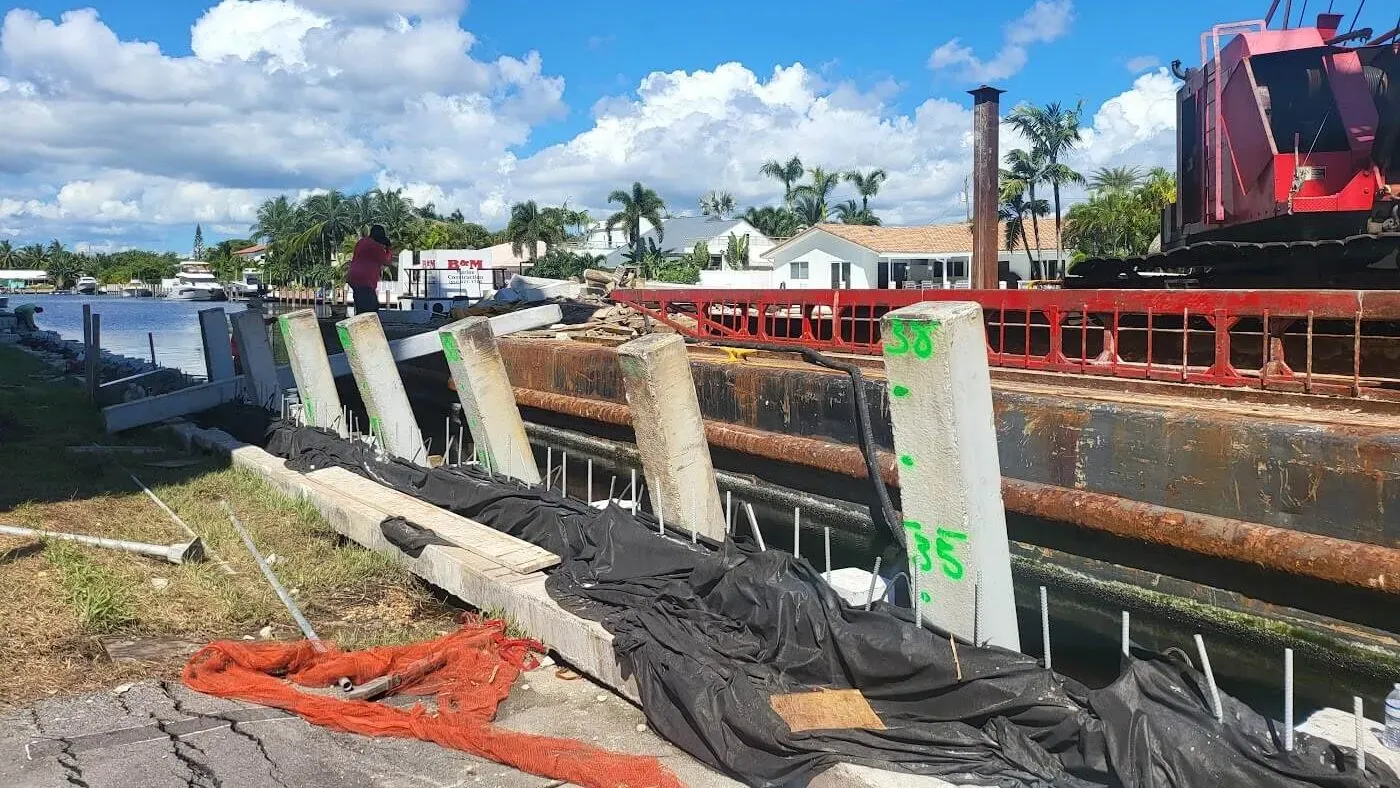Hurricanes pose a significant threat to Florida’s coastlines, making effective coastal protection and seawall installation paramount. Seawalls play a critical role in safeguarding properties from the devastating impacts of storm surges and flooding. This blog explores the importance of seawalls in hurricane preparedness, the essential role of repair services, such as those provided by Sea Me Dive, and how proper maintenance can enhance their effectiveness. By understanding these aspects, homeowners can take proactive measures to protect their investments, reduce property damage, and ensure long-term resilience against future storms.
Understanding Hurricane Damage Prevention for Seawalls
Understanding hurricane damage prevention for seawalls is crucial for coastal cities in Florida, where the threat of hurricanes, rising water levels, and water erosion is a constant concern. Seawalls, designed to protect properties from storm surges and flooding, play a pivotal role in safeguarding both residential and commercial waterfront properties. With hurricanes becoming increasingly severe due to climate change, implementing effective flood prevention strategies and proper seawall construction, including seawall repair projects using robust construction materials, is essential to maintain the structural integrity of coastlines. Knowledge of hurricane preparedness in Florida can significantly reduce property damage and enhance community resilience. Luckily, Sea Me Dive has the knowledge to help you!
What is the Role of Seawalls in Coastal Protection from Hurricanes?
Seawalls serve a vital function in coastal protection, particularly in hurricane-prone regions like Florida, where they act as barriers against the destructive forces of storm surges, flooding, and saltwater erosion. Designed from durable materials such as concrete, these structures are engineered to withstand harsh weather conditions and prevent soil erosion, safeguarding properties and ecosystems alike.
Their mechanical and structural design is crucial, as these barriers must support significant hydraulic pressures, prevent seawall subsidence, and maintain stability over time. Various types are employed, including concrete, rip rap rocks, and vinyl sheets, each chosen based on environmental conditions, local geology, and intended function. In regions where hurricanes pose a frequent threat, the implementation of these protective barriers is paramount to minimize flood risks and preserve fragile coastal ecosystems.
Why is Seawall Repair Important for Hurricane Preparedness in Florida?
Seawall repair is essential for hurricane preparedness in Florida as it directly impacts the durability and effectiveness of coastal protection structures.
Regular assessments and targeted maintenance solutions ensure that seawalls remain structurally sound and capable of withstanding severe storm events, thereby minimizing potential property damage during hurricane season. Factors contributing to seawall wear and tear include environmental degradation from wave action, shifts in sediment, and the corrosive effects of saltwater. Aging materials, inadequate initial construction, or misaligned seawalls can further compromise seawall integrity.
Implementing proactive maintenance solutions is crucial. These may involve:
- Conducting thorough inspections to identify vulnerabilities
- Using targeted grout injections to restore structural integrity
- Installing tieback anchors and reinforcing with steel rebar to provide additional support
By prioritizing these practices, homeowners and municipalities can help ensure their seawalls remain resilient against natural forces.

The Role of Seawall Repair Services in Florida to Prevent Hurricane Damage
Seawall repair services, such as Sea Me Dive, play a critical role in preventing hurricane damage across Florida’s coastal regions, where heavy storms can severely compromise existing seawalls. By employing specialized marine construction techniques and utilizing high-quality materials, these services help ensure that seawalls can withstand the intense forces of storm surges and flooding, thereby protecting valuable property investments and enhancing community safety.
How Can Seawall Repair Services Help with Hurricane Damage Prevention?
Seawall repair services contribute significantly to hurricane damage prevention by assessing and reinforcing the structural integrity of seawalls, thus ensuring they withstand extreme weather conditions and prevent bowing or leaning. For example, tieback anchors provide vital lateral support, helping to stabilize the wall against the immense forces generated by hurricane winds and waves.
- Advantages of Tieback Anchors: Increased lateral stability, better resistance against extreme conditions, quicker installation.
By employing such innovative marine construction practices, the performance of seawalls is greatly improved, offering better protection for coastal properties from the destructive impacts of hurricanes.
What Are the Risks of Not Having a Seawall in Florida?
The absence of a seawall in Florida can expose properties to significant risks, particularly during hurricanes where flooding, storm surges, and soil erosion are prevalent. Without these protective barriers, coastal properties face increased susceptibility to water erosion, leading to severe property damage, loss of land, and potential safety hazards for residents.
Over the years, numerous coastal communities have experienced devastating impacts due to flooding events exacerbated by the lack of resistant infrastructure. For instance, Hurricane Sandy in 2012 highlighted this vulnerability, with New Jersey experiencing damages exceeding $30 billion, primarily in areas without adequate seawall protections.
- Coastal flooding can lead to increased insurance premiums
- Communities with seawalls often report quicker recovery after storms
- Seawalls foster local wildlife habitats, enhancing biodiversity
How Does Seawall Construction Help with Hurricane Preparedness?
Seawall construction is a cornerstone of effective hurricane preparedness, particularly for coastal cities in Florida, where rising water levels and storm activity pose a constant threat. By utilizing innovative coastal engineering techniques and high-quality materials, seawalls can be designed to absorb and deflect the energy from storm surges, thus providing essential protection to waterfront properties and enhancing the waterfront lifestyle.

These structures are not merely barriers; they embody complex engineering principles that prioritize durability and functionality. Flooding prevention and erosion control are paramount, necessitating the use of robust materials such as reinforced concrete, steel rebar, and geotextiles. Each choice is strategic, ensuring that seawalls withstand the relentless forces of nature while maintaining their structural integrity over time.
Key design features often include:
- Curved profiles: These shapes effectively redirect wave energy
- Drainage systems: Essential for preventing water accumulation behind the wall
- Vertical or sloped surfaces: Each design has its benefits depending on specific location requirements
Ultimately, the integration of these elements enables seawalls to safeguard against both immediate flooding risks and long-term coastal erosion, reinforcing their vital role in urban planning and disaster readiness.
How Can You Maintain Your Seawall to Ensure Long-Term Protection?
Maintaining your seawall is vital for ensuring long-term protection against the ravages of hurricanes and coastal erosion. Regular inspections and proactive maintenance practices, such as repairing vertical cracks and addressing misalignments, can significantly extend the seawall’s lifespan and enhance its effectiveness in preventing property damage from storm surges.
To maintain optimal performance during the ever-changing coastal conditions, landowners should consider implementing a variety of maintenance solutions and proper inspections. Seasonal inspections are crucial, allowing for the early detection of wear and tear that could weaken the structure.
- Routine cleaning to remove debris, allow better drainage, and prevent saltwater corrosion
- Reinforcing the structure with additional materials to resist saltwater erosion
- Applying protective coatings that deter weathering effects and corrosion
Understanding the potential threats posed by saltwater erosion is essential, as it can gradually undermine the structural integrity and soil density. By forming a comprehensive seawall lifecycle management plan, supported by seawall professionals, property owners can ensure not only the longevity of their seawalls but also the safeguarding of their coastal properties and recreational activities in the long run.
The Importance of Seawall Maintenance for Flood Prevention
Seawall maintenance is crucial for effective flood prevention, particularly in hurricane-prone areas like the Florida coast, where the threat of rising water levels and storm surges is ever-present. Proper maintenance practices, adhering to building codes and emergency safety precautions, ensure the structural integrity of seawalls, allowing them to function optimally during severe weather events, including various hurricane categories, and safeguarding properties from potential damage.
Frequently Asked Questions
How do seawall repair services contribute to overall hurricane preparedness in Florida?
By keeping seawalls well-maintained and functional, repair services, including those by Sea Me Dive, aid in the overall goal of preparing for hurricanes in Florida. A strong and sturdy seawall is an essential component of coastal protection against these powerful storms.
What types of services are typically offered by Florida seawall repair companies?
Seawall repair services in Florida by Sea Me Dive include inspections, maintenance, and repairs of existing seawalls, including the seawall cap. They may also offer new seawall construction for areas that require additional coastal protection and erosion prevention.
Why is seawall maintenance important for preventing flood damage in Florida?
Seawalls act as a barrier between the ocean and inland areas, helping to prevent flooding during hurricanes. However, if these structures are not properly maintained with materials like polyurethane, they can weaken and fail, leaving the surrounding areas vulnerable to flooding and costly damage.
How does seawall repair contribute to erosion control in Florida?
Erosion is a common issue in coastal landscapes, and seawalls are designed to prevent it by providing a stable shoreline. When seawalls are damaged, erosion can occur, leading to property damage and an increased risk of flooding during hurricanes. Repair services help ensure seawalls remain effective in controlling erosion and extending the seawall lifespan.
Can seawall repair services also provide storm surge protection in addition to flood prevention?
Yes, in addition to preventing flooding, seawalls also serve as a defense against storm surges, which are sudden increases in sea level caused by a hurricane’s strong winds. By keeping seawalls strong and well-maintained through services from companies like Sea Me Dive, repair services help reduce the impact of storm surges on coastal areas in south Florida.
